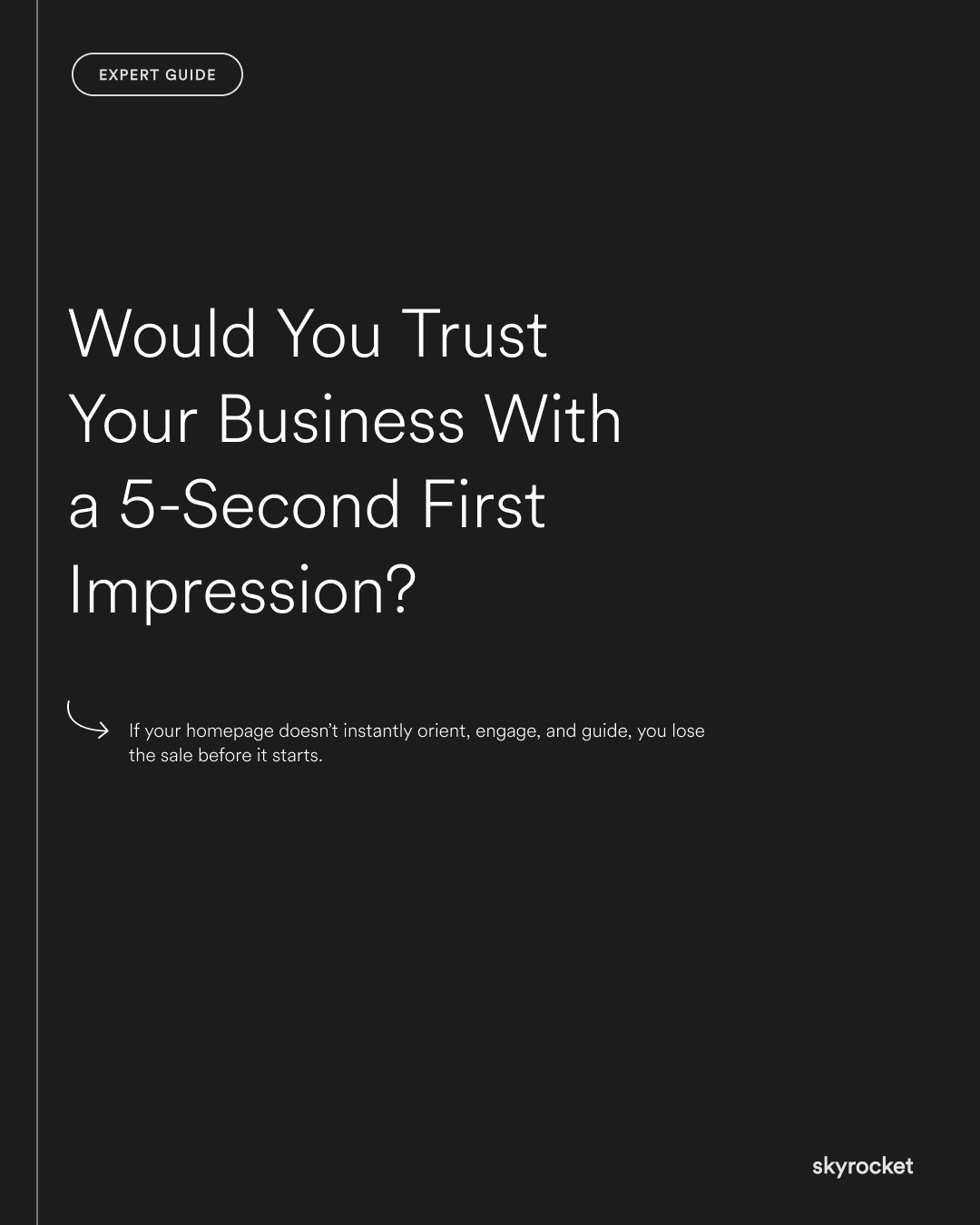Five seconds. That’s all it takes for someone to decide if they trust your business. Not to buy. Not to sign up. Just to decide whether to keep looking, or bounce.
This is the quiet risk hiding in most websites. You get one quick scan, one fast scroll. If your homepage doesn’t instantly orient, engage, and guide, you lose the sale before it starts.
And the worst part? You often won’t see the damage in analytics. You’ll just feel it over time in slower growth, weaker leads, and lukewarm enquiries.
Let’s fix that.
Why your homepage matters more than you think
You probably already know your homepage matters. But many businesses underestimate just how much it sets the tone:
- It’s the front door for almost every user.
- It’s your quickest credibility test.
- It sets the default journey for new customers.
A homepage doesn’t need to say everything. It just needs to say the right things, in the right order, with zero confusion.
Key Tip: A homepage should answer three questions in 5 seconds flat:
- What is this?
- Who is it for?
- What should I do next?
If yours doesn’t, it’s leaking trust.
What most homepages get wrong
1. Weak or vague headlines
Headlines that try to be clever often skip clarity. If your homepage leads with “Powering the future of innovation,” users will keep scrolling. Or worse, leave.
Fix it: Say exactly what you offer, and who it’s for. “Accounting software for NZ tradies.”
2. Confusing layouts and mixed priorities
If everything is bold, nothing stands out. If your eye doesn’t know where to go first, users won’t either.
Fix it: Use visual hierarchy to guide the eye: headline first, key CTA second, supporting proof third.
3. No clear next step
It’s shocking how many homepages have no meaningful call to action above the fold.
Fix it: Use a single, high-intent CTA in the first screen. Avoid "Learn more". Be specific: “Get a quote,” “Book a demo,” “See pricing.”
4. Speaking about you, not them
Users don’t want your mission statement. They want to know if you understand their problem.
Fix it: Lead with the customer’s pain or goal. Show them they’re in the right place.
5. No trust signals
Design might look clean, but if there’s no social proof, awards, or recognisable brands, users stay wary.
Fix it: Add a row of logos, testimonials, or stats that build credibility fast.
What a high-converting homepage actually includes
Here’s a cheat sheet for homepage structure that builds trust and drives action:
- Hero section with clear headline and CTA: What you do, who it’s for, and how to take action.
- Customer outcomes: What problems you solve and results you deliver.
- Social proof: Logos, testimonials, reviews, stats—whatever earns trust fast.
- How it works or key features: Make the service or product tangible. Avoid jargon.
- Why choose us: One or two reasons you’re different or better.
- Secondary CTA: For those not ready to commit, give them a softer step (e.g. "See our work").
- Footer with clarity: Contact details, nav links, legal. Keep it clean.
-
Objection: “But they’ll click around to learn more, right?”
Some might. Most won’t. Especially not on mobile, or if they’re mid-scroll at 8:30pm while watching TV.
You don’t get time to convince. You get a glance. If that glance isn’t clear, the click never comes.
What to Do Now
- Do the 5-second test — Show someone your homepage for 5 seconds. Ask what the business does, who it helps, and what they’d do next.
- Rewrite your hero headline — Make it specific, relevant, and free of filler words.
- Add or clarify your main CTA — Put it above the fold and make it action-oriented.
- Scan for social proof — If there’s none, add logos, testimonials, or stats.
- Clean up visual hierarchy — One bold path, not a dozen loud distractions.
Want a gut check on whether your homepage is helping or hurting? Reach out for a quick, honest review. No fluff. Just answers.



